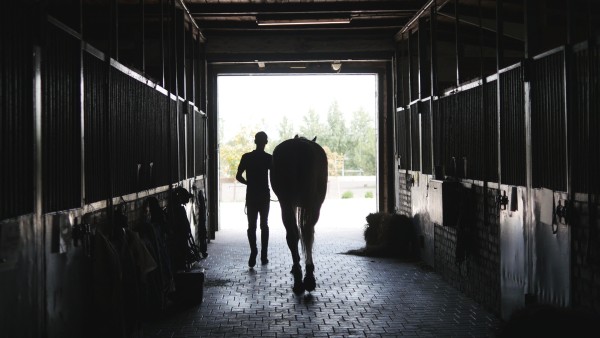The stable aisle is driveway, foyer and living room all in one. Because of the busy traffic and multiple uses, a badly designed or poorly maintained aisle is at least annoying and at worst dangerous. Whether you’re designing a new stable or improving an existing setup, consider the following aspects of aisleway safety as you plan:

- Dimensions—Aisleways eight feet wide or wider allow two horses to pass without crowding, or a single passerby to make the journey without being nipped by occupants on either side. This width is also adequate for even large horses to turn around safely. Aisle ceilings are best constructed very high (nine feet or more) or very low (around seven feet) but heights are dependent upon the horses being stabled. At these heights, a rearing horse either won’t reach the rafters, or he’ll connect before he gets up the momentum to damage his poll or face.
- Floor—Avoid or remove slick asphalt or smooth concrete as aisleway footing. When money is no object, interlocking rubber “paver” bricks are a safe, classy flooring that requires little upkeep. Texturized concrete, which incorporates coarse particles for extra traction, and stall mats placed over slicker surfaces are a step down in cost but provide clean durable surfaces. Dirt and stone-dust floors are cheap and safe, but both require maintenance to keep them smooth and dust-free.
- Lighting—Mount light fixtures where they pose no hazard of being contacted by horses but will still illuminate the aisle fully and cast light on the sides of cross-tied horses being examined, groomed and tacked up. Cold-proof fluorescent lights are inexpensive to run and cast a more consistent light than incandescent bulbs.
Click here to read more about barn lighting. - Clutter—Even the best-designed aisle becomes dangerous when feed cans, saddle racks, wheelbarrows and the like form an obstacle course. For safety’s sake, adopt a minimalist policy for maintaining your aisle; cross-ties, stall cards and blanket racks are really all you need. If your tack and feed rooms can’t hold everything else, consider adding an extra shed outside the barn to store overflow equipment.
Don’t miss out! With the free weekly EQUUS newsletter, you’ll get the latest horse health information delivered right to your in basket! If you’re not already receiving the EQUUS newsletter, click here to sign up. It’s *free*!








